Disclosure: This article contains affiliate links. We may earn a commission from purchases at no extra cost to you, which helps our travel content.
The morning mist clings to the verdant Himalayan foothills as prayer flags flutter in the gentle breeze, their vibrant colors standing in stark relief against the ancient forests. After decades studying ecosystems across continents, Bhutan's pristine wilderness still manages to humble me with its untouched majesty. This small kingdom, nestled between India and China, holds the distinction of being the world's only carbon-negative country—a fact that resonates deeply with my environmental scientist's heart. My two-week trek through the sacred peaks surrounding Thimphu wasn't merely a journey across physical terrain, but a passage through cultural landscapes preserved through centuries of intentional isolation and reverence for the natural world. As autumn painted the landscape in amber and gold, I discovered that Bhutan's famous Gross National Happiness isn't just a clever policy slogan—it's a tangible philosophy woven into the very fabric of the land and its people.
Preparing for Bhutan's Sacred Wilderness
Bhutan isn't a destination one visits on a whim. The kingdom's carefully managed tourism policy—requiring visitors to spend a minimum daily tariff (currently $250 per day in peak season)—serves as both economic strategy and environmental safeguard. This fee covers basic accommodations, transportation, and a licensed guide, making Bhutan more accessible than many assume, particularly for mid-range travelers willing to plan ahead.
After securing my visa through an authorized Bhutanese tour operator, I spent weeks researching the trekking routes around Thimphu. The Dagala Thousand Lakes Trek immediately captured my attention with its moderate difficulty and remarkable ecological diversity. At 62, I've learned to honor my body's limitations while still pushing boundaries—this 5-day trek with elevations between 3,000-4,700 meters seemed the perfect balance.
My decades of fieldwork taught me that proper gear makes all the difference between misery and comfort in remote locations. I invested in a new pair of hiking boots with excellent ankle support for the rocky terrain. These proved invaluable when negotiating the sometimes slippery autumn trails. For the dramatic temperature fluctuations common in mountain environments, I packed my trusty down jacket that compresses remarkably small yet provides essential warmth during frigid mountain evenings.
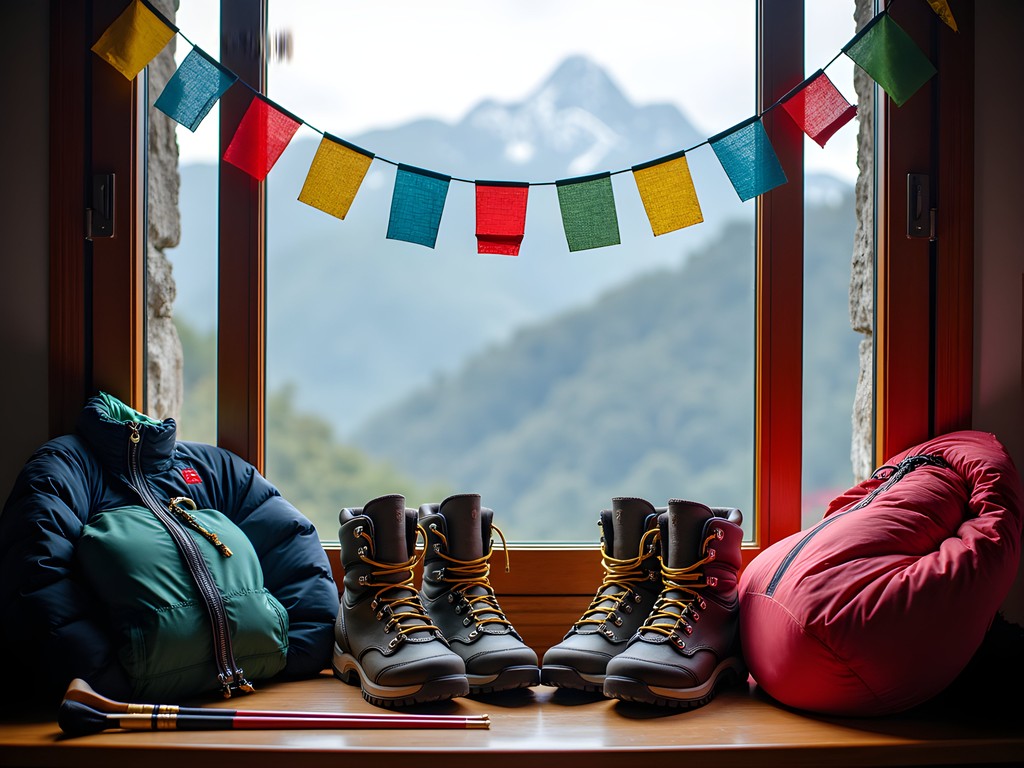
💡 Pro Tips
- Begin altitude acclimation in Thimphu (2,334m) for at least 2 days before attempting higher treks
- October-November offers ideal trekking weather with clear mountain views and comfortable temperatures
- Pack biodegradable wet wipes for personal hygiene during multi-day treks with limited facilities
The Cultural Tapestry of Thimphu
Before venturing into the mountains, I dedicated three days to exploring Thimphu, Bhutan's fascinating capital and cultural heart. Unlike the frenetic energy of most Asian cities, Thimphu moves at a contemplative pace. The absence of traffic lights (the city famously has a white-gloved traffic officer instead) symbolizes the country's thoughtful approach to modernization.
The imposing Buddha Dordenma statue overlooking the valley was my first stop. Standing 51.5 meters tall and housing over 100,000 smaller Buddha statues inside, it's a testament to Bhutan's living Buddhist traditions. As an environmental scientist, I was particularly struck by how seamlessly the massive structure integrates with its natural surroundings—a harmony between human creation and landscape that Western development often lacks.
The National Textile Museum provided unexpected insights into Bhutan's ecological history. Traditional weaving patterns often incorporate native flora and fauna, creating a historical record of biodiversity that complements modern scientific documentation. The museum's elderly weaver explained how certain motifs represent plants now threatened by climate change—a sobering reminder of why conservation matters.
At the Takin Preserve, I observed Bhutan's national animal—a peculiar-looking creature that's something of a goat-antelope hybrid. According to local legend, the takin was created by the Divine Madman, Drukpa Kunley, who attached a goat's head to a cow's body. As a scientist, I appreciate the more evolutionary explanation, but there's something delightful about a country whose national animal comes with such a whimsical origin story.

💡 Pro Tips
- Visit the Folk Heritage Museum early in the morning to enjoy traditional butter tea with locals
- Purchase handmade paper products at the Jungshi Paper Factory as sustainable, lightweight souvenirs
- Respect dress codes when visiting dzongs (fortresses)—shoulders covered and long pants/skirts required
The Dagala Thousand Lakes Trek: Ecological Wonders
The Dagala trek begins in Genekha village, about an hour's drive from Thimphu. My guide, Dorji, a former monk with an encyclopedic knowledge of local flora, proved the perfect companion for an environmental scientist. As we ascended through blue pine forests on the first day, he pointed out medicinal plants I'd only read about in ethnobotanical journals.
"This," he said, plucking a small purple flower, "is used for high-altitude sickness. Our traditional doctors have prescribed it for centuries." The plant, I later confirmed, contains compounds similar to modern altitude medications—another example of traditional knowledge preceding scientific 'discovery' by centuries.
By day three, we reached Labatama (4,300m), where alpine meadows stretch toward snow-capped peaks. The ecological transition zones fascinated me—watching species composition change with elevation is like traveling through climate zones without crossing latitudes. I documented these transitions with my mirrorless camera, whose lightweight body proved ideal for high-altitude trekking while delivering exceptional image quality for my blog readers.
The lakes themselves—there aren't actually a thousand, despite the trek's name—are ecological treasures. Crystal clear waters reflect the surrounding peaks, creating mirror images so perfect they disorient the eye. These high-altitude aquatic ecosystems support specialized organisms adapted to extreme conditions—nature's laboratories for evolutionary adaptation.
While camping near Relatsho Lake, we witnessed a rare Himalayan blue sheep herd navigating seemingly impassable cliffs with impossible grace. These moments—watching specialized species in their natural habitat, undisturbed by excessive human presence—remind me why Bhutan's conservation model deserves global attention.
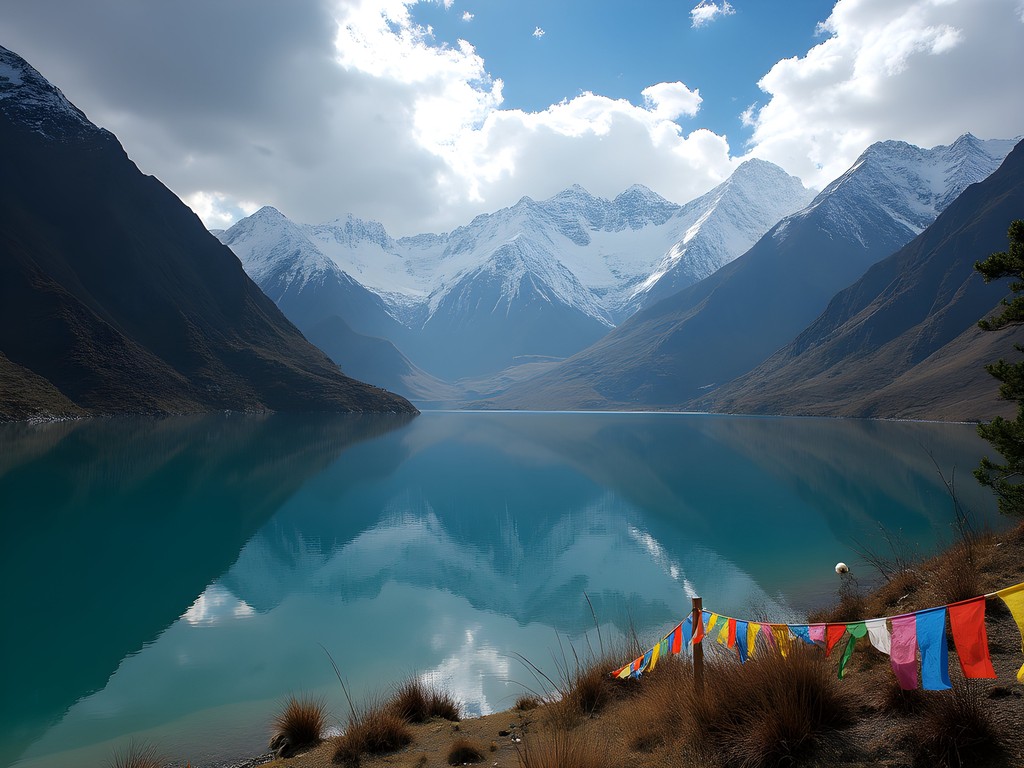
💡 Pro Tips
- Carry a reusable water filter rather than plastic bottles—mountain streams provide clean water sources
- Acclimate properly by following the 'climb high, sleep low' principle when possible
- Learn basic Dzongkha greetings to connect with local herders you'll meet along the route
Sacred Encounters: Monasteries and Mountain Spirits
The spiritual dimension of Bhutan's landscape cannot be separated from its physical features. Throughout our trek, Dorji would pause at certain passes to explain their significance in Buddhist cosmology. "This mountain," he'd say, gesturing toward a particularly imposing peak, "is home to a protective deity who safeguards travelers."
As a scientist, I've learned that acknowledging local spiritual frameworks doesn't diminish empirical understanding—rather, it enriches it with cultural context. The Bhutanese reverence for mountains has protected ecosystems that might otherwise have been exploited, creating an inadvertent conservation ethic centuries before the concept existed in Western thought.
On day six of our journey, we detoured to visit Phajoding Monastery, perched at 3,640 meters with views that defy description. Founded in the 13th century, the monastery houses monks who spend winters in near-isolation when heavy snows cut off easy access. I was invited to observe a morning ritual where young monks debated philosophical concepts with theatrical gestures—clapping hands and stamping feet to emphasize logical points.
The monastery's caretaker, an elderly monk named Tashi, showed me ancient texts describing seasonal patterns and wildlife behaviors with remarkable accuracy. These centuries-old observations align with modern phenological studies I conducted throughout my career, reminding me that careful observation transcends cultural and temporal boundaries.
During our descent, I used my binoculars to spot a Himalayan monal—a pheasant with iridescent plumage that seems almost mythical when glimpsed through forest shadows. These compact yet powerful binoculars have accompanied me through ecosystems worldwide, their clarity and light-gathering capacity making wildlife observation possible even in challenging light conditions.

💡 Pro Tips
- Remove shoes before entering any temple or monastery
- Bring small, thoughtful offerings (incense or butter for lamps) when visiting monasteries
- Walk clockwise around religious structures to follow Buddhist tradition
Living with the Land: Lessons from Highland Communities
The most profound insights from my Bhutanese trek came not from dramatic landscapes but from encounters with highland communities practicing sustainable lifeways refined over generations. In Chamgang village, we spent a night with a family whose seasonal migration patterns follow ancient rhythms—moving livestock between elevations as seasons change.
Our hostess, Dema, a woman perhaps my age with weathered hands and keen eyes, showed me her family's carefully maintained seed stock—heirloom varieties adapted to specific microclimates along their migration route. As climate patterns shift, these genetic repositories become increasingly valuable, containing traits that might help crops adapt to changing conditions.
"My grandmother taught me which seeds for which valleys," she explained through Dorji's translation. "Some for wet years, some for dry. We never plant all one kind."
This intuitive understanding of genetic diversity as insurance against environmental variability mirrors principles I've taught in university courses—yet Dema's knowledge comes from intergenerational wisdom rather than textbooks.
The family's yak-hair tents, portable and perfectly adapted to harsh mountain conditions, demonstrate indigenous technology refined through centuries of testing. Their cooking implements, including a stone pot passed through generations, connect daily practices to ancestral knowledge.
As we shared butter tea and buckwheat pancakes around their hearth, I reflected on how much Western societies have sacrificed mobility and adaptability for permanence and accumulation. In my travel journal, I sketched their seasonal round and noted how their lifestyle maintains intimate knowledge of ecosystem patterns—knowledge increasingly rare in our digitized world. This simple hardcover journal has documented my observations across continents, its acid-free pages preserving insights that might otherwise fade from memory.

💡 Pro Tips
- Bring small gifts (tea or school supplies) when visiting remote communities
- Learn about yak products—from butter to textiles—which sustain highland livelihoods
- Ask permission before photographing people or their homes—respect privacy and cultural sensitivities
Final Thoughts
As my boots carried me back down to Thimphu after two transformative weeks in Bhutan's sacred mountains, I found myself walking more slowly, reluctant to leave the rhythm of high-altitude life. The trek had been physically demanding—my knees certainly reminded me I'm no longer 40—but spiritually replenishing in ways I hadn't anticipated. Bhutan's approach to environmental stewardship, embedding conservation within cultural and spiritual frameworks rather than separating humans from nature, offers profound lessons for our climate-challenged world. The kingdom isn't perfect; it faces modernization pressures and climate threats beyond its control. Yet in its sacred peaks and the wisdom of its people, I found hope that harmonious relationships between humans and ecosystems remain possible. If you're contemplating this journey, come with open lungs for the thin air and an open heart for the wisdom shared freely by those who've called these mountains home for centuries. The Himalayan foothills will test your physical endurance—but they'll reward your spirit tenfold.
✨ Key Takeaways
- Bhutan's sacred landscape approach creates effective conservation without separating humans from nature
- Autumn (October-November) offers ideal trekking conditions with clear mountain views and comfortable temperatures
- Indigenous knowledge about local ecosystems provides valuable insights that complement scientific understanding
📋 Practical Information
Best Time to Visit
Fall (October-November)
Budget Estimate
$3,000-4,500 for two weeks (including mandatory daily tariff)
Recommended Duration
12-14 days (including acclimation)
Difficulty Level
Advanced - Requires Good Fitness And Altitude Adaptation

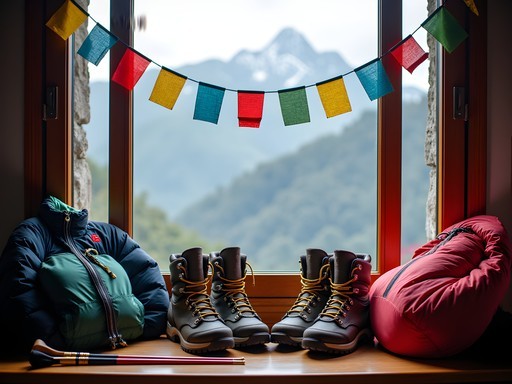
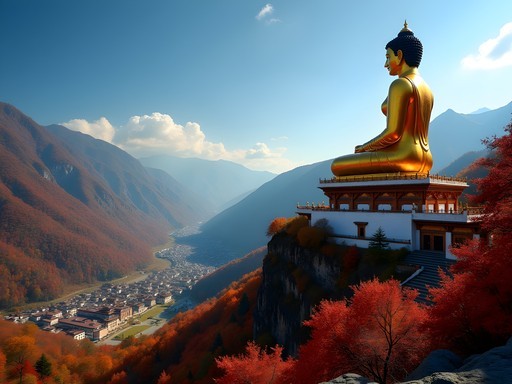
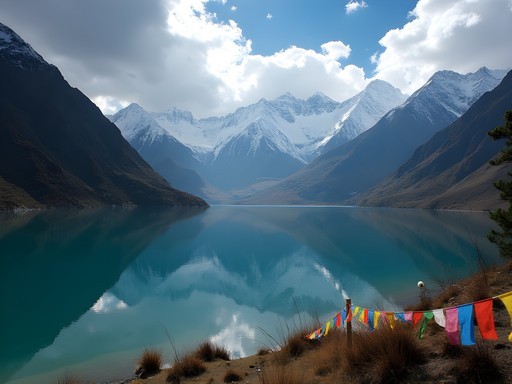





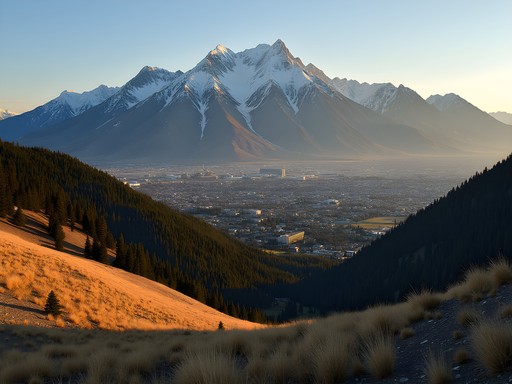

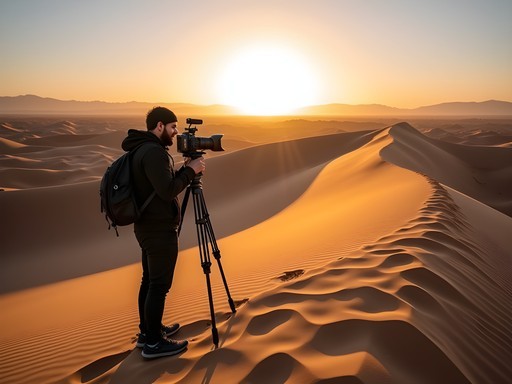
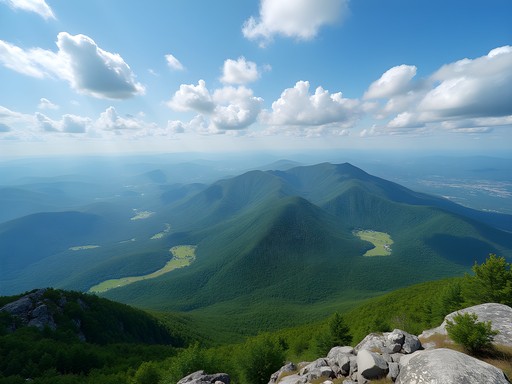


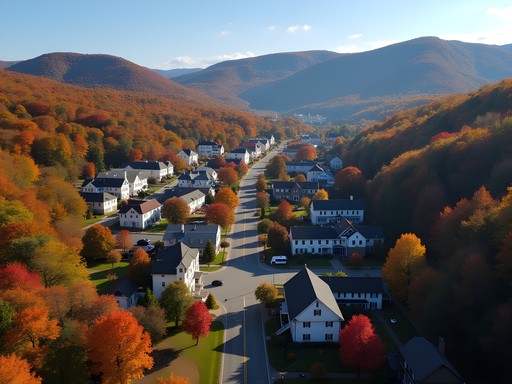
Comments
waveclimber
How complicated was the permit process? I've heard Bhutan can be tricky with all the daily tourist fees and requirements.
Allison Greene
It's definitely more involved than most places! I went through a local tour operator who handled everything. The daily fee is steep ($250/day when I went) but it includes so much - guide, accommodations, meals, transport, and contributes to their free healthcare and education. Worth every penny.
waveclimber
Thanks for the info! Going to start saving up now. That spiritual connection you described with the mountains sounds exactly what I need right now.
Jose McDonald
Wow Allison! Your description of the Dagala Thousand Lakes Trek took me right back to my own journey through Bhutan last year. Though I didn't have two full weeks like you did (jealous!), even my shorter trek left me completely transformed. The silence up there is unlike anywhere else I've been - it's like a living presence. Question though: how did you handle the altitude adjustment? I struggled the first couple days despite all my prep. Also, did you get to witness any of the local festivals? I was lucky enough to catch a small monastery celebration and it was MIND-BLOWING! The masks, the dancing, the entire spiritual atmosphere... unforgettable! I used my trekking poles constantly on those steep descents - absolute lifesavers.
Allison Greene
The altitude was definitely challenging, Jose! I spent three full days in Thimphu before heading up, which helped tremendously. Also drank so much water and garlic soup (local remedy). And yes - caught the tail end of a small archery festival! Those guys are SKILLED.
waveclimber
Those local festivals are incredible! I saw one in Nepal years ago and still think about it.
nomadzone
This trek looks incredible! The prayer flags against those mountain backdrops are giving me serious wanderlust.
Allison Greene
Thanks nomadzone! The prayer flags are even more magical in person - the way they dance in the mountain breeze feels almost supernatural.
mountainbuddy
OMG THIS IS EXACTLY WHAT I NEEDED!!! Heading to Bhutan in 3 weeks and was so nervous about the Dagala trek! Your description of the monasteries along the way makes me even more excited. Did you need any special gear for the higher elevations? I'm bringing lots of layers but wondering if there's anything specific I'm forgetting? THANK YOU for this amazing guide!!!!
Allison Greene
You'll have an amazing time! Definitely bring a good headlamp (the stars are incredible), water purification tablets, and a quality rain cover for your pack - afternoon showers can come suddenly. The temperature swings from day to night are significant, so those layers will be essential. Enjoy every moment!
nomadzone
That section about mountain spirits gave me chills. So well written!
Bryce Diaz
Reading this transported me right back to my own journey through Bhutan last spring. There's something about those misty mornings in the Himalayas that changes you forever. I remember sitting outside a small teahouse near Thimphu, watching an elderly monk carefully hang prayer flags while explaining how each color represents different elements. That moment taught me more about mindfulness than years of reading could. For anyone planning this trek, I'd suggest bringing a good pair of hiking boots as the terrain varies significantly. Allison, did you have a chance to participate in any local festivals during your stay? The masked dances at the monasteries were a highlight of my trip.
mountainbuddy
Thanks for the boot recommendation! I've been looking at those exact ones for my trip next month. Did you find them comfortable right away or did they need breaking in?
Bryce Diaz
They needed about 2-3 day hikes to break in properly. I'd definitely start wearing them before your trip!
sunnyfan
Those prayer flag photos are incredible! Saving this for inspiration!
Hannah Woods
Your post captures the spiritual essence of Bhutan beautifully. I completed the Dagala trek in 2023, and the ecological diversity was astounding - from alpine meadows to those crystal-clear lakes you mentioned. What struck me most was how the trek integrates cultural heritage with natural beauty. The sustainable tourism model Bhutan maintains ensures these sacred spaces remain pristine. For anyone considering this trek, I'd recommend allocating at least 6-7 days to fully appreciate the landscape without rushing. Did you find the local guides knowledgeable about the spiritual significance of specific peaks?
bluebackpacker
How hard was it to get the permits? Planning a trip next year!
Allison Greene
Not too bad! Just make sure to book through an authorized Bhutanese tour operator at least 3 months in advance. The daily tourist fee covers a lot, but worth every penny!
wavephotographer
This brought back so many memories of my trek there last year! The way you described the prayer flags against the forest - spot on. Did you have any issues with altitude sickness? I struggled a bit on day 3 of the Dagala trek despite taking it slow. The locals kept offering me butter tea which helped surprisingly well!
Allison Greene
Thanks for reading! I did get a mild headache on day 2, but found that staying super hydrated helped me adjust. And yes to the butter tea - acquired taste but definitely seemed to help!
wavephotographer
Hydration is key! Wish I'd been better about that from the start. Did you visit the Jomolhari base area too?
Venture X
Premium card with 2X miles, $300 travel credit, Priority Pass